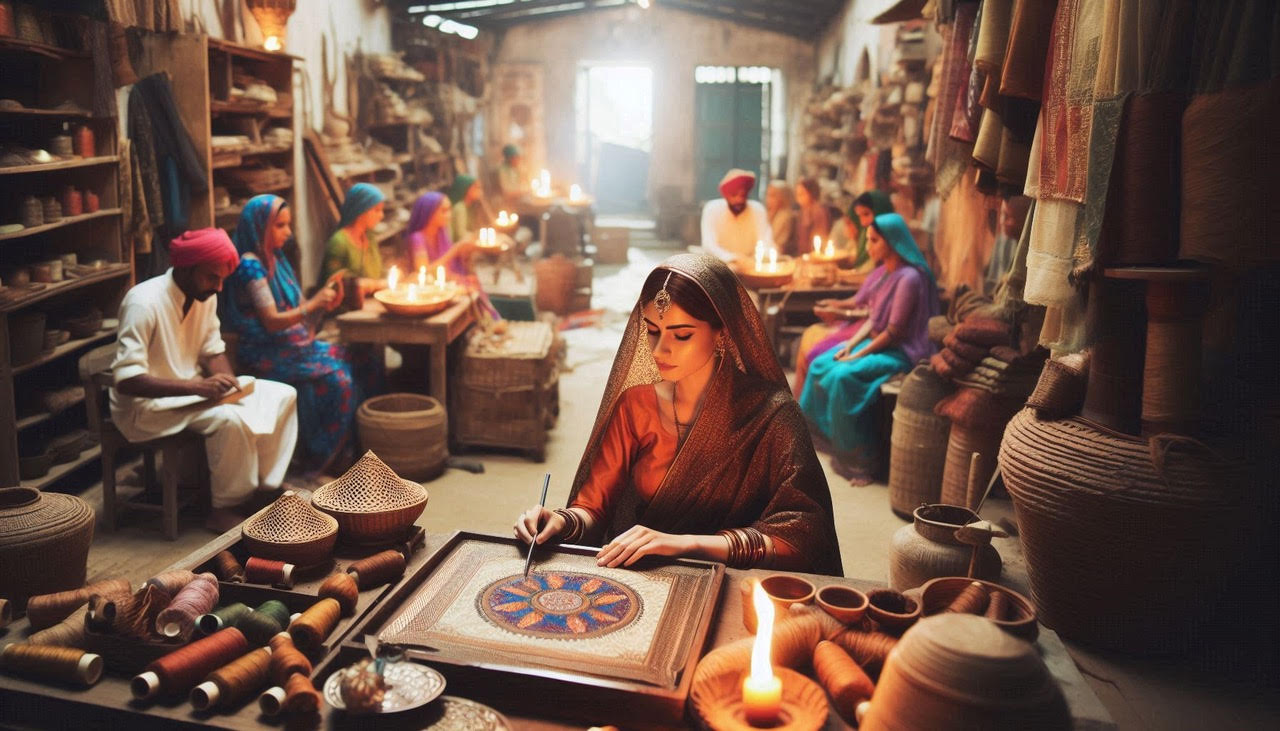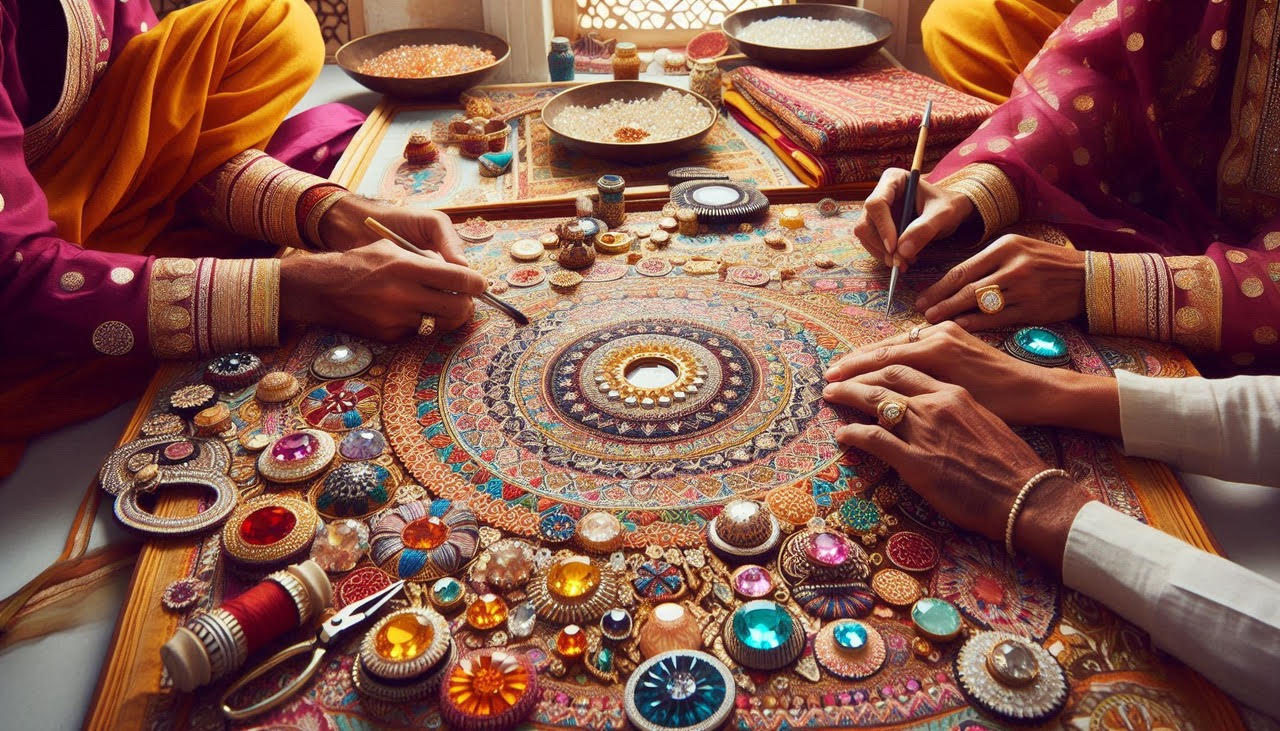What Paris calls a Maison, India has lived through its palaces – but never named.
In the rarefied world of global luxury, language is power. When we speak of a French maison, we invoke not merely a brand but an entire mythology – a house of mastery, heritage, and enduring identity that transcends its founders. Italy has its casa di moda, Japan reveres its shokunin traditions. Yet India, despite possessing millennia of sophisticated craftsmanship and cultural opulence, operates without a codified luxury language of its own.
This absence represents more than semantic oversight. It reflects a fundamental disconnect that has prevented Indian luxury from claiming its rightful position on the global stage – not as an exotic curiosity, but as an equal architectural force in the luxury ecosystem.
The Paradox of Indian Luxury
Walk through the corridors of any major luxury conglomerate’s headquarters, and you’ll find Indian craftsmanship everywhere – from Kashmir cashmere in European couture to Jaipur-cut gemstones in high jewellery and watchmaking. Yet when luxury executives speak of heritage houses, of authentic maisons, of cultural luxury DNA, India rarely features in the conversation as anything more than a supplier.
This paradox stems from India’s historical approach to luxury creation. Where European houses consolidated around individual visionaries who built scalable institutions, Indian luxury flourished through decentralised ecosystems — royal karkhanas, craft guilds, temple ateliers, and imperial workshops. These were expressions of community-led excellence rather than centralised brand empires.
The result? Indian craftsmanship commands global respect, but Indian luxury lacks institutional recognition. There is no Indian equivalent to Chanel’s enduring mystique or Cartier’s royal heritage – not from absence of artistry, but from absence of consolidation and, critically, the symbolic vocabulary that transforms craft into luxury narrative.
Beyond Imitation: Building Authentic Luxury Language
The solution isn’t to appropriate Western terminology but to excavate India’s own luxury lexicon. Consider three culturally grounded frameworks that could serve as India’s answer to the European maison:
Shilp Griha (House of Craft): Rooted in Sanskrit tradition, this concept repositions the artisan atelier as a heritage institution capable of transmitting skill and story across generations. Unlike the Western focus on individual genius, Shilp Griha honours collective mastery — the guild knowledge that creates luxury through community excellence.
Ratnaalaya (Treasure House): Evocative of India’s legendary relationship with precious objects, this designation naturally suits maisons emerging from jewellery, textiles, or decorative arts. It speaks to accumulation not just of wealth, but of cultural treasures that appreciate through time.
Kalaadhishthana (Seat of the Arts): A broader philosophical concept that can encompass multi-disciplinary luxury houses spanning design, wellness, hospitality, and lifestyle. This framework acknowledges luxury as a holistic cultural expression rather than product category.
These aren’t marketing constructs but attempts at structural parity — giving Indian luxury conceptual dignity equal to its artistic depth. A shared vocabulary enables industry cohesion, consumer clarity, and cross-cultural translation while allowing Indian brands to build mythologies that are authentically homegrown.

Global Timing, Local Imperatives
This reimagining arrives at a pivotal moment in luxury’s evolution. The industry’s traditional centres of gravity are shifting as regional narratives gain prominence — from K-beauty’s Korean aesthetic philosophy to Latin America’s artisanal revival movements. Cultural specificity has transformed from liability to luxury asset.
India enters this landscape with unprecedented advantages. Its living craft traditions offer authenticity that manufactured heritage cannot replicate. Its sustainable production models align with luxury’s growing consciousness mandate. Its civilisational depth provides narrative richness that newer luxury markets struggle to achieve.
Yet to claim its position at luxury’s top table, India must speak with institutional authority — not as individual artisans seeking validation, but as a luxury culture demanding recognition.
The Indian luxury house of tomorrow will not replicate Western models, nor should it. Instead, it will draw from palatial traditions of integrated excellence — where craftsmanship, hospitality, wellness, and cultural expression existed as unified luxury experiences.
The key lies not in choosing between tradition and modernity, but in creating institutional forms that allow both to coexist and strengthen each other. This requires new organizational models, new business structures, and ultimately, new language that makes these innovations legible to global luxury audiences.

From Legacy to Language
In luxury, perception shapes reality as powerfully as product quality. India possesses extraordinary legacy — what it now requires is the language to transform that legacy into contemporary luxury leadership.
This transformation demands more than translation; it requires cultural architecture. Indian luxury must name itself, organise itself, and present itself with the same intentionality that built the great European houses. Only then can India’s luxury identity evolve from admired craftsmanship to recognised institution — from beautiful exception to systematic excellence.
The vocabulary exists within India’s own cultural foundations. The question is whether the industry will embrace the work of excavation, codification, and elevation that transforms craft into luxury language. In doing so, India won’t just join the global luxury conversation — it will reshape it entirely.
Images generated with AI.










